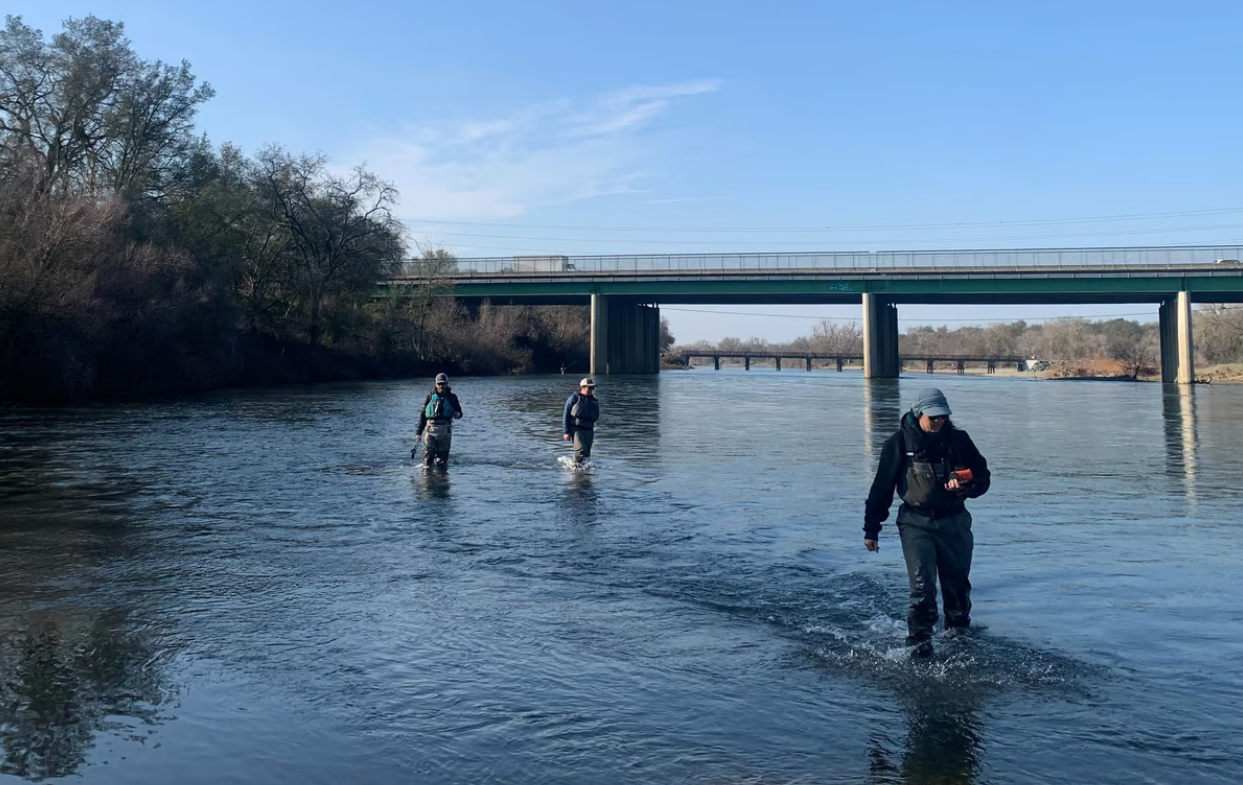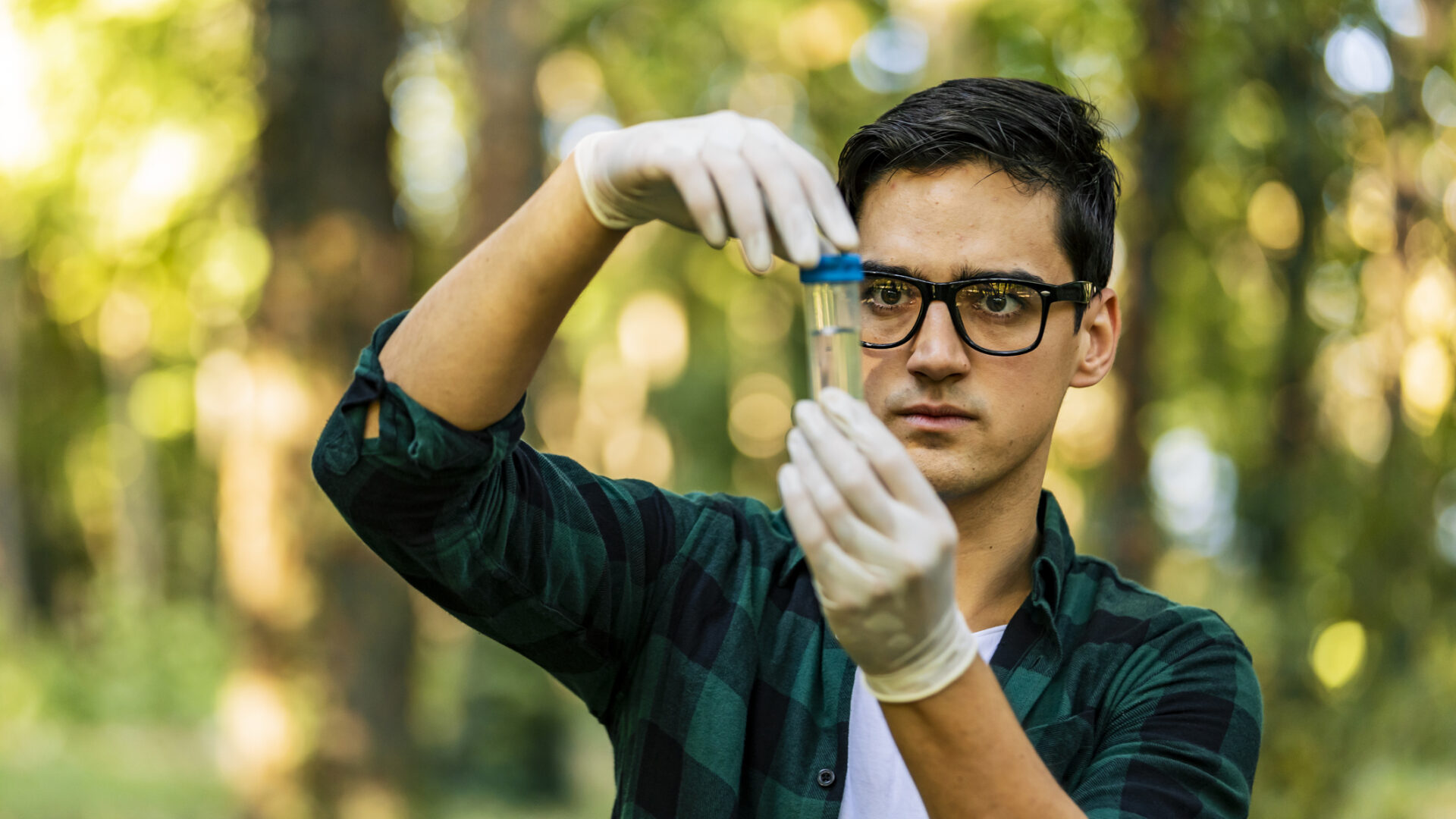
Quick Links
The Water Forum’s approach to meeting the coequal goals is grounded in cutting-edge science. After two decades, the Water Forum has made significant contributions to the science of anadromous fish and other species that live in the Lower American River.
The Water Forum’s work has included producing detailed underwater maps of the Lower American River to identify best locations for enhancing habitat that also avoid impacting flood safety, as well as studies that have revealed data on fish lifecycles, spawning and rearing, adaptation and roaming.
And, step-by-step adaptive management over the years has helped Water Forum scientists hone in on the exact conditions salmon prefer for spawning, including the right depth for gravel placement, flow, rock size and other parameters.
This program is growing in importance as the state and the water management system are under increased strain due to extended drought and climate change.
Science and Monitoring Projects
Redd Counts and Aerial Surveys: Monitoring results of Water Forum Salmonid Habitat Projects
During the fall and winter, Water Forum consultant Cramer Fish Sciences walked and floated along sections of the Lower American River to study salmon redds. These surveys cover both unenhanced sites, and areas where habitat has been created or enhanced by Water Forum projects. Cramer scientists recorded individual redd locations using GPS coordinates, and measured the dimensions, water depth, gravel size and other characteristics of each redd. This helps determine how intensively the restored areas are used, as well as the habitat types each fish species prefers.
And, for the first time, the survey data this year was uploaded to a new data portal so it can be shared in near real-time with other agencies, including the California Department of Fish and Wildlife, U.S. Fish and Wildlife Service, and U.S. Bureau of Reclamation. The data portal is administered by the CVPIA Science Integration Team (SIT), and since the Water Forum’s survey data is collected to CVPIA SIT standards, it will inform valley-wide habitat planning and adaptive management.
The work was funded by a $5 million grant from Proposition 68 administered by the California Natural Resources Agency. The money covered 2022 costs for both construction of the enhanced spawning habitat and pre- and post-construction surveys and monitoring, and is combined with funds from Reclamation that supported designs, modeling and permitting for the 2022 Habitat Project sites.
Water Forum also assists Reclamation with aerial redd counts along the entire Lower American River several times per season. Aerial photographs are georeferenced and redds are counted by trained staff to supplement on-the-ground survey information.
- News story (2/21/23): Steelhead surveys happening now will help future generations of fish survive
Otolith Research: Using fish ear bones to help evaluate flow management
The Water Forum is using the ear bones of fish—called otoliths—to learn insight into how different water release patterns and wetter vs. dryer years affect survival of different cohorts of juvenile salmonids. Otoliths are oval-shaped bones in the inner ear that help fish sense gravity and movement.
Otoliths are extraordinarily valuable because they contain daily growth rings. The size of the ring can provide information about how fast a fish grew. Chemical information stored in the bone provides insight about the fish’s environment and food. Laser transects of the otoliths can tell us the entire life history of a salmon, including if the fish reared as a juvenile on the Lower American River, was released from the Nimbus Hatchery, or came from other tributary or hatchery in the Central Valley.
For the past four years, the Water Forum’s science team has been collecting otolith bones from dead fall-run Chinook salmon that spawned in the Lower American River. We now have amassed over 1,000 of these delicate gems. Thanks recent grant funding through the U.S. Fish and Wildlife Service, the Water Forum team is cleaning and polishing the ear bones to expose the growth rings, which will then be analyzed at UC Davis using a mass spectrometer to reveal their microchemical make-up. A publication is pending.
- Blog post (4/27/22): How the Water Forum will use fish ear bones to help evaluate flow management
eDNA Research: Monitoring conditions for salmonids in the Lower America River
In 2021, amid California’s ongoing severe drought, the Water Forum tasked consultant Cramer Fish Sciences-Genidaqs Laboratory with deploying a newer monitoring process, known as an environmental DNA (eDNA) survey, to confirm if salmonids were present in the Lower American River. The goal: more fully understand how low flows, high water temperatures, and extreme heat impacted the abundance and distribution of steelhead trout and fall-run Chinook salmon in the river, during stressful conditions where traditional seining surveys were not safe for fish.
By collecting and filtering water samples, Genidaqs could detect and analyze mitochondrial DNA and identify specific fish species. The eDNA sampling was conducted at numerous locations throughout the river and was augmented with underwater video monitoring to locate and identify fish.
Initial results indicated that steelhead were present in very low numbers. Cramer Fish Sciences-Genidaqs found relatively higher concentrations of Chinook DNA compared to steelhead DNA. This was consistent with video documentation and field observations, and typical Chinook immigration and spawning behavior in the LAR.
The timing of this study in 2021 offered a unique opportunity to review salmonid abundance and distribution in the Lower American River during extreme drought conditions, and without the influence of any DNA material that may be present in hatchery effluent, because it occurred during a portion of the year where all juvenile fish had been evacuated from Nimbus Fish Hatchery, and moved to the Mokelumne River Hatchery, where temperature conditions were less extreme. Thus, any results were clearly indicating in-river salmonid presence without the hatchery influence.
A second eDNA survey was conducted during a minor flow pulse, in spring 2022, while juveniles were resident in the hatchery. The juxtaposition of eDNA-derived salmonid abundance with and without this background hatchery influence is the subject of a publication in development with Cramer Fish Sciences staff, since it is the only documented occurrence of this phenomena.
- Blog post (12/7/21): Surviving the Summer: Monitoring conditions for salmonids on the Lower American River
Funding Partners
Flows and Operations projects are made possible by grant funding from the U.S. Fish and Wildlife Service. Learn more about all of our partners on the Our Partners page.
Engagement
The Water Forum team and its members convene and engage in many important citizen working groups, forums and projects focused on the coequal objectives of water supply reliability and environmental health of the Lower American River. These include:
- American River Group (ARG): The ARG is a multi-agency and stakeholder technical team that coordinates fishery and operational requirements for the lower American River (LAR). The U.S. Bureau of Reclamation (Reclamation) is the ARG’s lead coordinator, bringing together those who have either a legislated or resources-specific interest in the operation of Folsom Dam and Reservoir, and the LAR.
Publications and Data
The Water Forum collaborated with Cramer Fish Sciences on several grant-funded papers that highlight the Water Forum’s habitat and science work along the Lower American River. The following papers are currently in review for publication in peer-reviewed journals:
Increasing Objectivity Associated with Anadromous Fish Redd Identification Using a Discriminant Function Analysis (in peer-review): Redd surveys can be used to track salmonid population trends over time. However, when reproduction timing and habitat for individual species (like Chinook and steelhead) overlap it can impact ability to correctly classify redds by species. This is further complicated when the corresponding adult fish is no longer present.
To decrease the subjectivity associated with unoccupied redd identification, a statistical model was built to predict redd species identity based on field-measured parameters including observation timing, redd dimensions, and substrate size. The model is highly accurate in identifying fall-run Chinook Salmon and CCV steelhead redds (96 percent and 97 percent, respectively). Accuracies for Pacific Lamprey were slightly lower (89 percent) than salmonids due to their lower observed abundance. The study demonstrates that physical and temporal metrics can support more accurate species identification, robust population estimates and inform future habitat restoration decisions.
Habitat factors affecting Chinook Salmon juvenile recruitment rates observed using parentage methods—Habitat Restoration Performance (in peer-review): Habitat restoration and enhancement efforts are intended to improve habitat conditions for salmonids within the river habitat available, thereby increasing reproductive success and subsequently increasing population abundance. Traditional monitoring methods for juveniles (e.g., rotary screw trap) have been used for decades to estimate juvenile salmonid production from natal habitat but have not been effective for understanding how habitat projects improve reproductive success at a population level. This type of monitoring cannot partition juvenile production by the habitat type (e.g., augmented or nonaugmented) from which juveniles may have originated. By implementing a genetics study on the Lower American River, utilizing tissue samples from spawned female adult carcasses and juveniles passing through the rotary screw trap later in the season, the juvenile production of enhanced habitat sites and unenhanced river reaches can be measured.

